Gunung Tidar Botanical Garden
The city of Magelang, the capital of Magelang Regency in Central Java, has a unique feature compared to other cities in Indonesia. Right in the center of this 128,264-populated city (as of mid-2023) stands Gunung Tidar. Gunung Tidar is better described as a hill, as it rises about 500 meters above sea level. The hiking trails are relatively accessible, as they have been arranged with tiered steps.
Since 2021, Gunung Tidar area has been designated as a botanical garden by the Mayor of Magelang. Covering an area of approximately 700,000 square meters, Gunung Tidar Botanical Garden serves as a conservation area, educational and research site, and a tourist attraction.
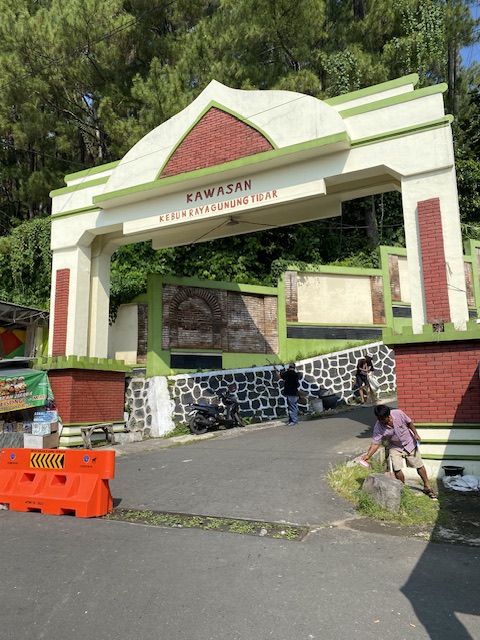
The distance from the entrance gate of Gunung Tidar to where I was staying on Jalan Jenderal Sudirman is about 500 meters. The cloudless sky in the morning was perfect for climbing Gunung Tidar. Before starting the hike, I had breakfast at one of the food stalls in the parking area near the entrance to the Botanical Garden. The food stall served senerek soup, a specialty of Magelang, which is usually eaten with steam rice.
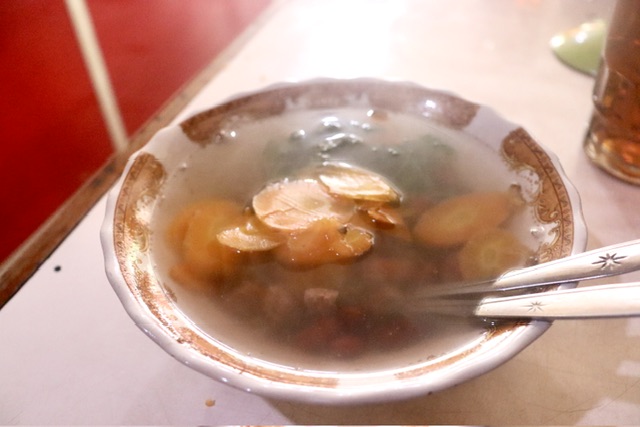
From the gate to the entrance of the Botanical Garden, I walked along a slightly uphill asphalted road. The road was quite busy as it serves as a thoroughfare for residents of Kelurahan Magersari who live at the foot of Gunung Tidar. I passed by several souvenir vendors at Taman Lembah Tidar. As I was walking, the sound of drumming was carried by the wind, coming from a nearby performance stage.
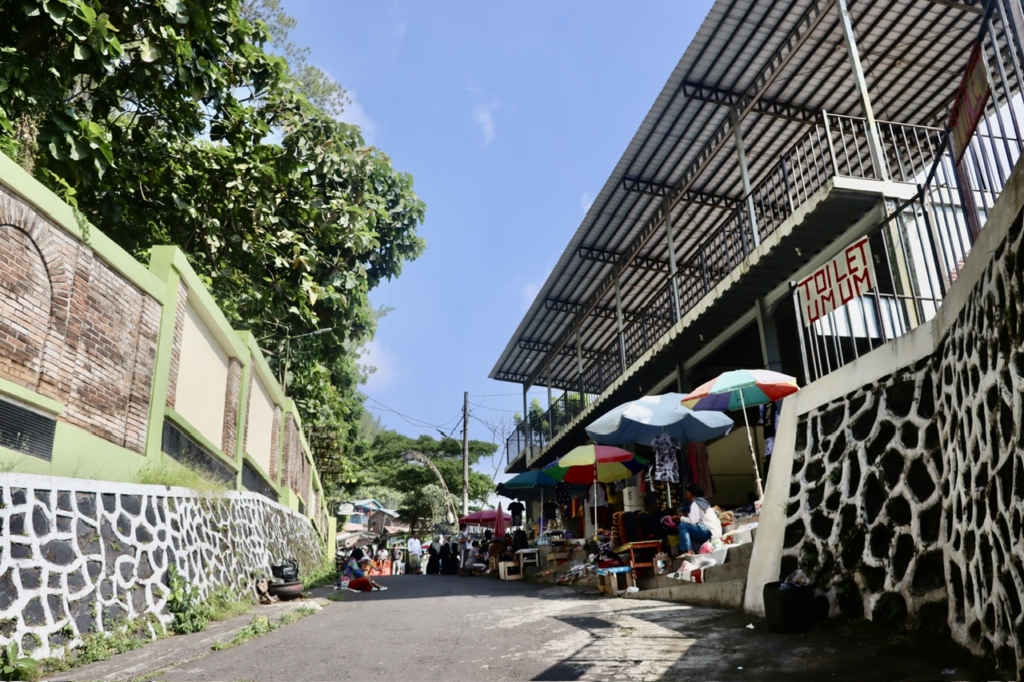
After walking for about 5 minutes, I arrived at the entrance of Gunung Tidar Botanical Garden. By paying a ticket fee of Rp 5,000, I was able to enter the garden area. The atmosphere inside the Botanical Garden felt in stark contrast to the village I had just passed through. The intense sunlight was blocked by the dense leaves of the trees. My skin immediately felt the cool breeze and the chirping of birds started to become audible.
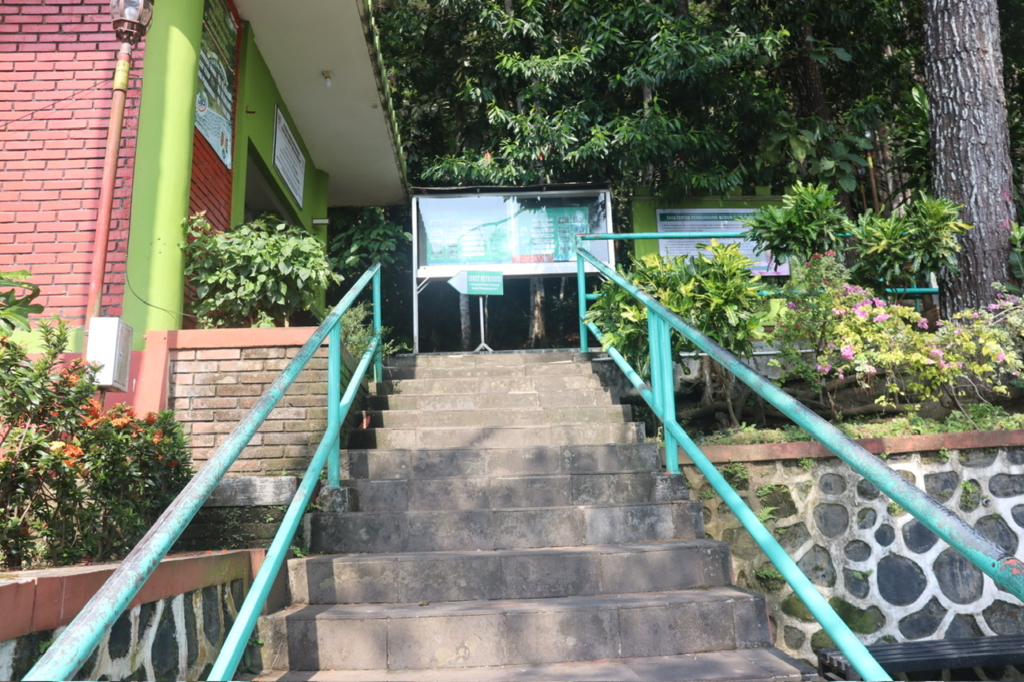
Hundreds of years ago, Gunung Tidar had been a barren hill until the 1960s when it was reforested with pine trees (Pinus merkusii). Reforestation continued with the planting of hardwood trees like damar and mahogany, which now grow tall along the edges of the hiking steps.
Gunung Tidar is also known for the presence of long-tailed macaques (Macaca fascicularis) that often come down in groups to the base of the mountain to forage from visitors. Fortunately, I did not encounter them while hiking.
Gunung Tidar and Its Legend
The name Tidar comes from two Javanese words: mukti and kedadar. Mukti means success or achieving one’s goal, and kedadar means forged or tested. In the past, those who reached the summit of Gunung Tidar were considered to have successfully faced all challenges.
In reality, it felt like a physical test for me. Panting, I climbed each step while I was regulating my breath. The arrangement of the steps—numbering 1,002 in total—for the hike was quite good. Resting spots were provided at several points.
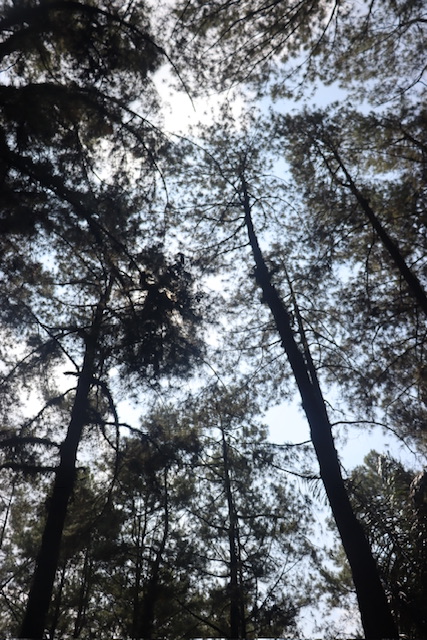
As I ascended, the air became cooler, and the atmosphere grew more serene. It felt pleasant to hike amidst the pine trees and tropical hardwoods that seemed to scrape the sky. As I was climbing, I passed by several Chinese graves with somewhat worn gravestones.
Approaching the summit, I saw signs pointing towards the makom (sacred sites). Unnoticed, my shirt had become soaked with sweat. The climb had been quite exhausting.
At the summit of Gunung Tidar, there are several sacred sites frequently visited: the sites of Syekh Subakir, Sunan Geseng, Kyai Panjang, and Kyai Semar. “These sites were established by people from Jakarta,” said Wahyuningsih, the daughter of Mrs. Sutidjah, the caretaker of Gunung Tidar.
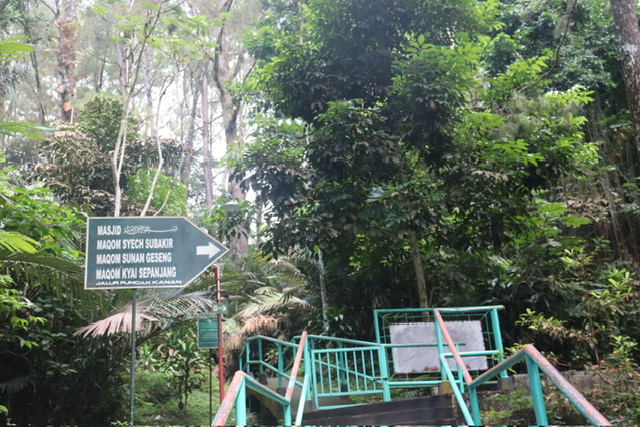
Syekh Subakir was one of the early Islamic missionaries in Java, his sacred site was also found in Tuban Regency, East Java. Sunan Geseng was a devoted follower of Sunan Kalijaga and also a prominent Islamic missionary in Java, while Kyai Panjang was a disciple of Syekh Subakir. Pilgrims to these sacred sites generally come in groups and come from various parts of Java.
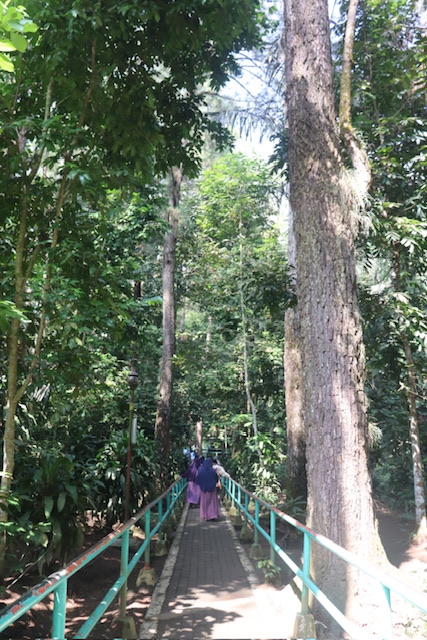
At the summit, the terrain is relatively flat. The top of Gunung Tidar is a very open expanse. The edges are covered with dense trees. Underneath the shady trees, there are stalls selling drinks, food, and even souvenirs.
A monument to the Military Academy stands at the top of the field, which is often used as a venue for activities of the academy that trains prospective Army officers. The forest on the western slope of Gunung Tidar is also used for the training of military officer candidates.
At the center of the field stands a small monument with the ancient Javanese alphabet “Sa” inscribed on three sides. The monument, known as Sa Sa Sa [an acronym for sapa salah seleh, meaning “whoever prays (remembers God) will be safe”], is said to represent the center of Java Island or the central point of the island. According to legend, the Sa Sa Sa Monument is considered the axis of the land of Java. Geographically, Gunung Tidar in Magelang does indeed lie at the midpoint of Java Island, whether you draw a straight line north-south or east-west.
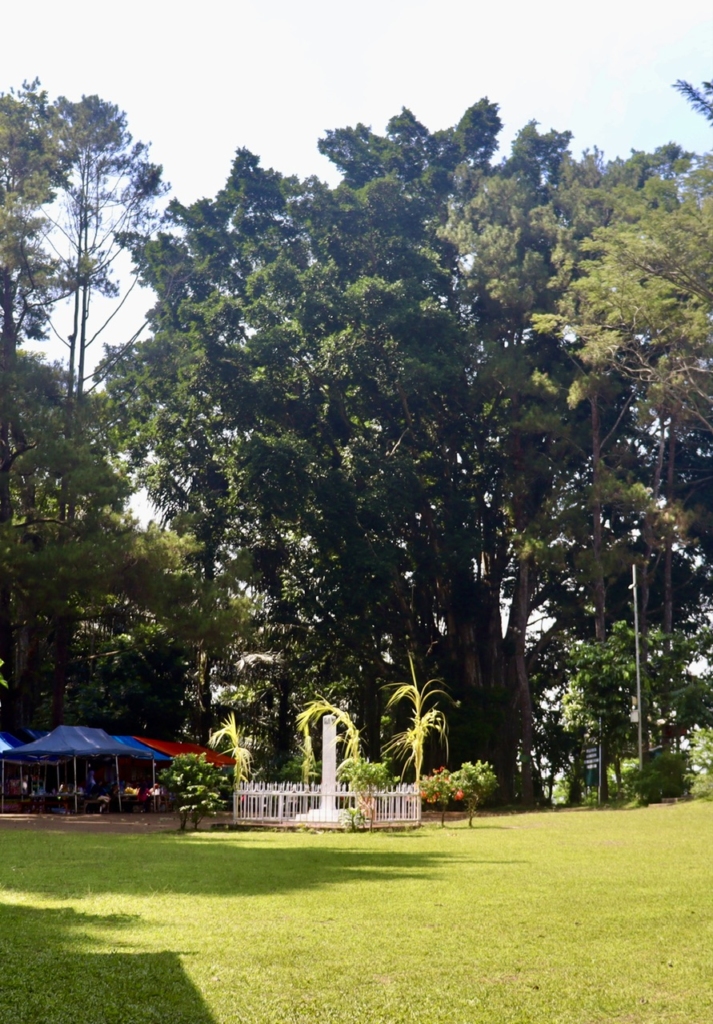
At the summit, there is also an observation tower. As I approached the tower, some of the view was obstructed by fog and the tops of trees. A sign directed me to the sacred site of Kyai Semar, which is cone-shaped and painted in gold color.
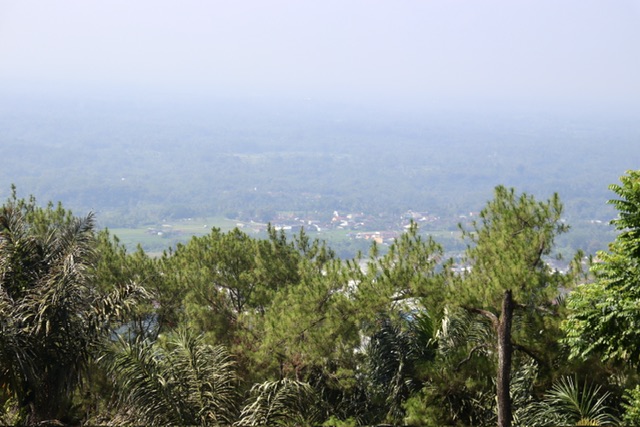
Kyai Semar or Eyang Semar is a figure in Indonesian spiritual mythology. According to Professor Suwardi Endaswara, a prominent scholar of Literary Anthropology at Yogyakarta State University, Eyang Semar represents the symbol of a true teacher in Javanese spiritual tradition. A true teacher, in this context, is someone who guides individuals to be on the right path.
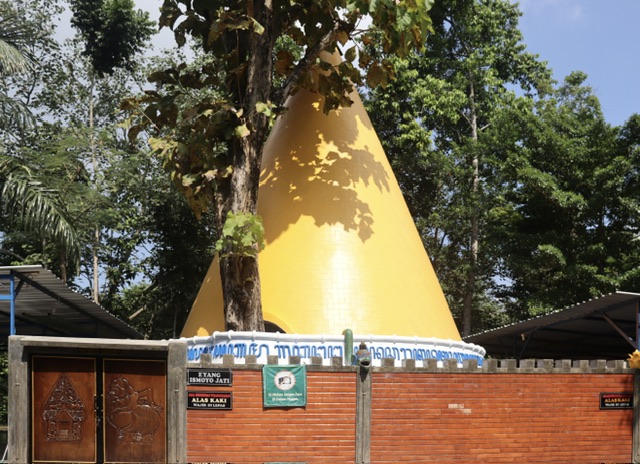
In the Journal of Language and Literature Education, Fikha Nada Naililhaq from Gadjah Mada University writes that there is a local belief among the community around Gunung Tidar that Kyai Semar is a divine emissary tasked with guarding the land of Java.
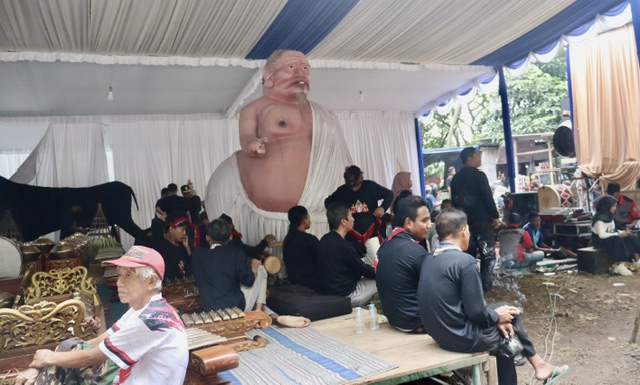
Grebeg Suro Gunung Tidar
My visit to Magelang coincided with the beginning of Suro, the first month in the Javanese Islamic calendar. The government set the date of 1 Muharram 1446 Hijriah, which falls on July 7, 2024. In connection with this, the community living around Gunung Tidar celebrates it with the Grebeg Suro festival, which includes cultural and artistic performances.
The Javanese Islamic calendar combines the Islamic (Hijri) calendar, which is based on the lunar cycle, and the Saka Hindu-Buddhist calendar, which is based on the solar cycle. Sultan Agung, the 3rd King of the Mataram Sultanate, merged these calendars at the turn of the New Year Saka 1555, which coincided with 1 Muharram 1043 Hijri or July 8, 1633 AD. The calculation of the new year in the Javanese Islamic calendar continues to refer to the year Saka 1555.
In the Javanese Islamic calendar, the first month is called Suro. The word Suro is derived from Ashura, the tenth day of Muharram, which is commemorated by Muslims as the martyrdom of Hussain bin Ali, the grandson of the Prophet Muhammad (Peace be upon him), who was killed in the Battle of Karbala (now in Iraq).
Grebeg, derived from the Javanese word nggrebeg, means to lead or escort a king, dignitary, or bride. The Grebeg Suro ceremony is held close to the advent of the Javanese Islamic New Year. The residents living at the foot of Gunung Tidar, who are part of the Paguyuban Abdi and Juru Kunci Gunung Tidar, hold their third large-scale Grebeg Suro celebration. Uniquely, the Grebeg Suro Gunung Tidar this year is based on the Gregorian year 2024, not the Javanese Islamic year 1958.
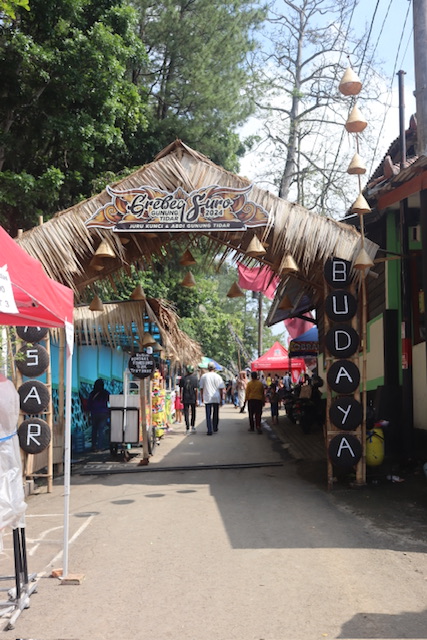
A stage was set up for traditional art performances that took place two days before 1 Suro. The area around the stage turned into a small fair. Stalls selling various contemporary foods and drinks lined the edges of the stage. Visitors from the surrounding Kelurahan Mergasari came in large numbers to watch the performances. According to Wahyuningsih, the Paguyuban and the local community around Gunung Tidar have always held Grebeg Suro. However, large-scale events like this have only been organized since 2022.
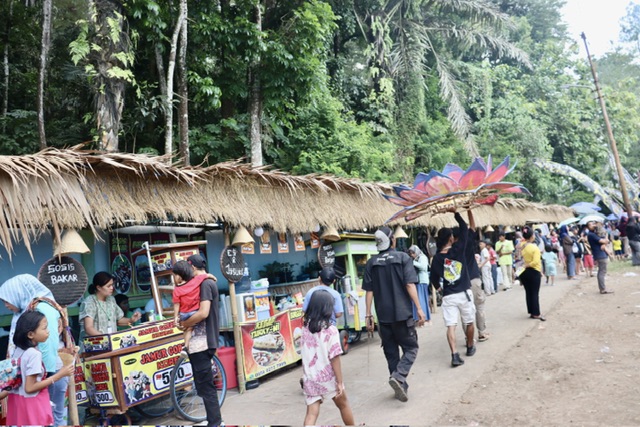
Grebeg Suro Gunung Tidar Parade
The funding for the Grebeg Suro activities came from the extended family of the Paguyuban, donation boxes, souvenir sales, and a few sponsors. For this year’s Grebeg Suro, 18 art groups performed on the stage. They came from various art groups around Magelang. Most of them participated willingly, seeking blessings from the event and their ancestors. “Some of the dancers volunteered and only requested transportation money,” added Wahyuningsih, a representative of the Paguyuban Abdi and Juru Kunci Gunung Tidar.

The Paguyuban organized a parade in the afternoon leading up to 1 Suro, featuring participants from art groups, local community members, and 5 ogoh-ogoh (effigies). Accompanied by the Buana Marching Band from the Barisan Serba Guna (Banser) Nahdlatul Ulama Windusari, Magelang, the paraded participants walked along a predetermined route. The procession included the Abdi and Juru Kunci Gunung Tidar, participants from outside the region, ogoh-ogoh, the marching band, and the Liong Samsi performance from Gunung Sari, Windusari, Magelang. The Liong Samsi’s lion dance performance added a distinctive element to the Grebeg Suro parade. The performance was carried out by local children who trained with Tionghoa (Chinese) community members.
Residents gathered along the roadside to welcome the parade. The standout feature was, of course, the large and towering Kyai Semar ogoh-ogoh. “We made the Semar ogoh-ogoh ourselves,” said Wahyuningsih.
The highlight of the evening for 1 Suro was marked by the Kirab Tumpeng (Tumpeng Parade) leading to the summit of Gunung Tidar. The ritual was conducted at the Kyai Semar sacred site with a special tumpeng for the site. There was also a gunungan (a mountain-shaped offering) filled with vegetables that was paraded. “The vegetables symbolize prosperity; it’s also our expression of gratitude,” Wahyuningsih added. The participants of the ritual believe that by honoring individuals with special status, they can receive blessings.
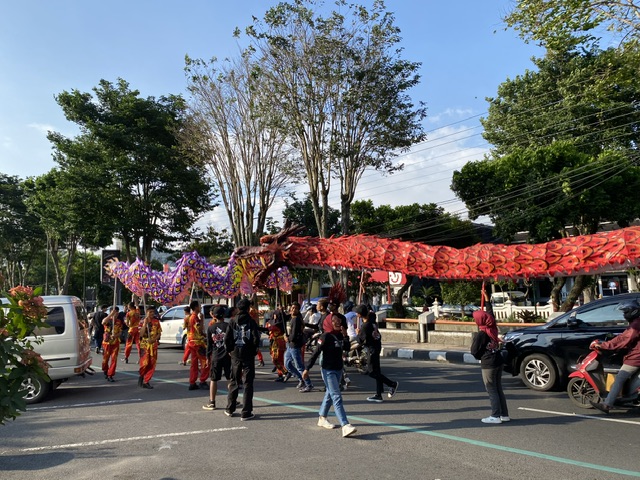
“For us, the month of Suro is extraordinary, it has a high spiritual significance. There is a meaning contained in the night of Suro, insights, and it can serve as a mediation with the spirits of our ancestors,” Wahyuningsih explained the significance of the month of Suro. Therefore, she and those who still believe in the sacredness of the month of Suro avoid holding events such as weddings, circumcisions, or building houses during this time. “No one dares to hold such events,” she added.
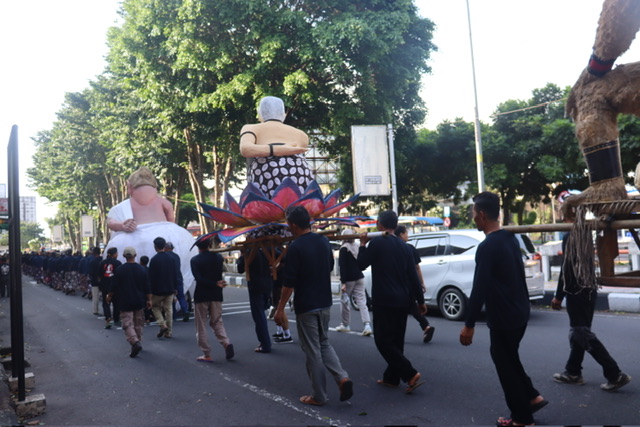
Wahyuningsih’s determination to organize the grand Grebeg Suro event as it is now was not without challenges. Three years ago, she had to convince her family and relatives. She also remembered her father, who used to hold film screenings or ketoprak performances leading up to 1 Suro. After her father passed away, her mother continued the tradition.
Wahyuningsih and the Paguyuban want to persist in organizing the event while preserving the culture, local wisdom, traditions, and, most importantly, the spiritual values of Grebeg Suro. She remains committed to upholding the cultural traditions of her ancestors. “I am proud to be born Javanese, the child of a keeper (of Gunung Tidar). I am also proud of our country, our culture, and our traditions,” she said with great conviction.
